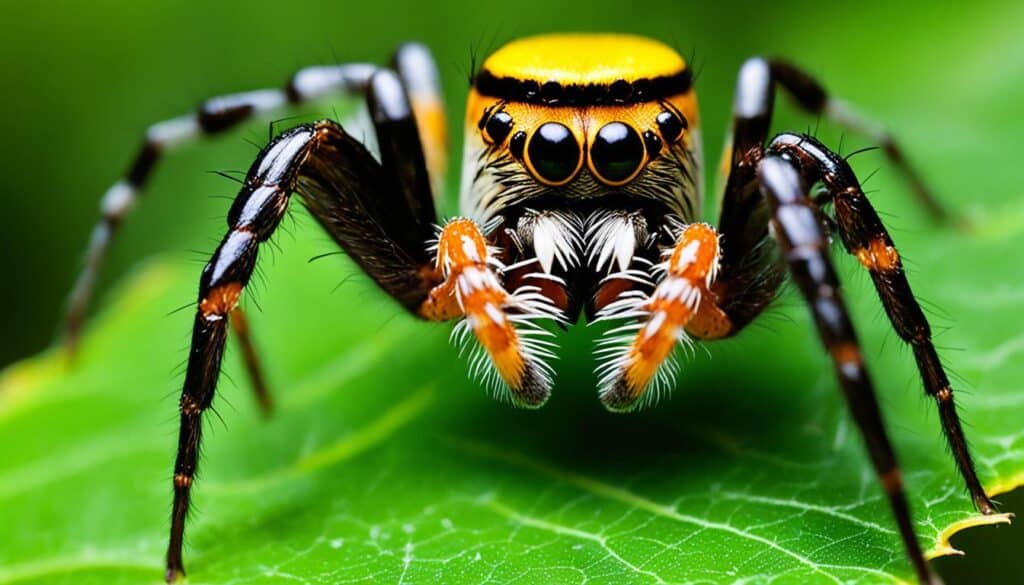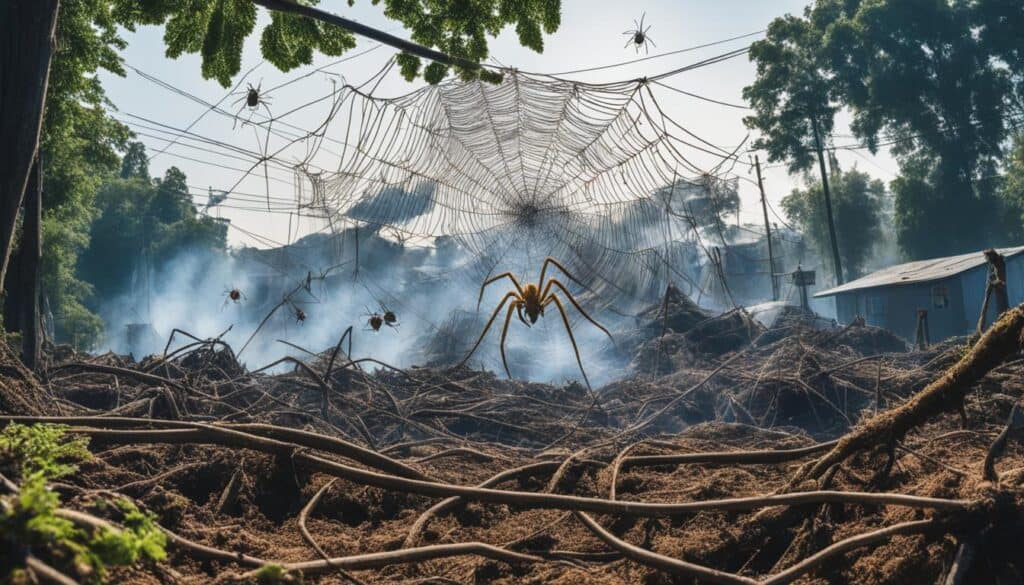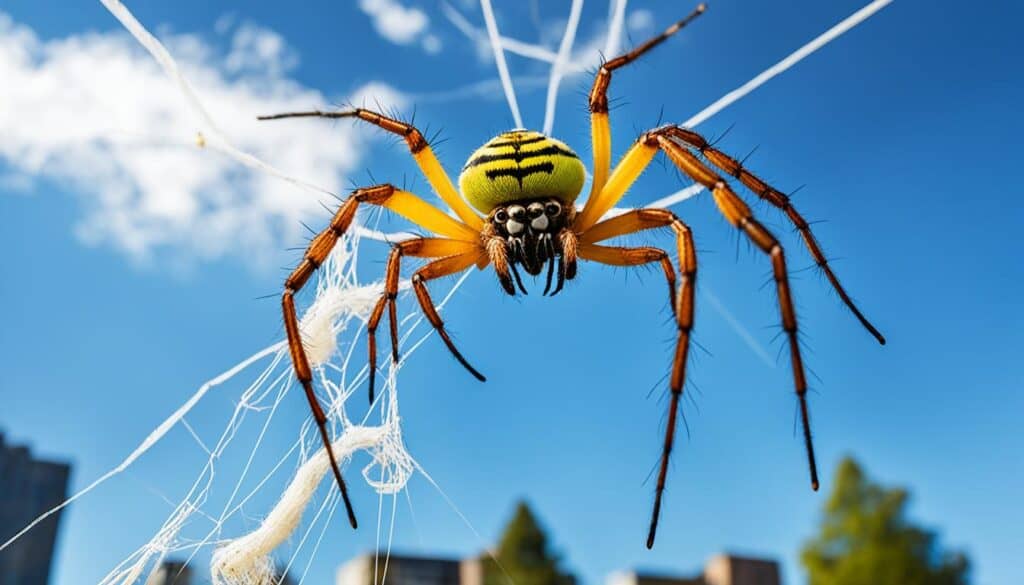Did you know about 15% of people are really scared of spiders? Let’s talk about the Joro spider’s move across the East Coast. These spiders, especially the females, can have legs up to 3 to 4 inches long. They came to America first in Georgia in 2013. Since arriving, they’ve quickly spread, both on their own and with some help from humans.
Valdosta State University and the University of Georgia researchers studied these spiders. They found that Joro spiders aren’t looking for trouble and mostly eat small bugs. They’re actually good because they eat insects we don’t like, such as stink bugs.
Even though Joro spiders like to float on the wind, they’re not trying to take over everything. They have reached places like Oklahoma, Maryland, and West Virginia. Experts think it might take 10 more years for them to be common along the entire East Coast. So, why are Joro spiders spreading so fast? Let’s find out.
Key Takeaways
- The Joro spider can stretch its leg span to about 3 to 4 inches.
- 15% of the population is affected by arachnophobia.
- Joro spiders first arrived in the U.S. in 2013, spotted initially in Georgia.
- These spiders prefer “ballooning” to travel distances up to 10 miles naturally.
- Studies show Joro spiders are non-aggressive and beneficial for controlling certain insect populations.
- Expect more sightings along the East Coast as they adapt to new environments.
Introduction to Joro Spiders and Their Spread Across the East Coast
Joro spiders made waves since being spotted in Georgia in 2013. Their stunning black-and-yellow bodies caught everyone’s attention. As invaders, they spread about 10 miles yearly. The Southeast U.S. now hosts millions.
These spiders are incredibly tough. Unlike most spiders, Joros stay frozen for over an hour if scared. Erin Grabarczyk, Andy Davis, and Ella Blakely have observed their growing presence in states like Alabama and Florida.
Joros travel using “ballooning,” where they glide on the wind with silk threads. Though invasive, they hardly affect humans or pets. Their bites are mild and not harmful.
Because Joro spiders can handle the cold, they might head north in the U.S. Their spread is watched closely by ecologists. Female Joros have huge leg spans, while males stay smaller and browner.
Despite fears, Joro spiders are shy and harmless. They prefer spinning webs over causing trouble. These spiders might even help control pests. Our eight-legged friends are truly intriguing!
Causes of Joro Spider Spread
Have you ever wondered about the speedy spread of Joro spiders in the U.S.? The reasons are quite interesting. These spiders first came to the U.S. in 2013, likely by hiding in shipping containers. They traveled all the way from East Asia to our homes.
The “ballooning” technique is another key to their spread. Spiderlings let out silk threads, catching the wind to move far away. It’s like giving them a natural way to fly, spreading them about 10 miles each year.
Joro spiders are tough, surviving even cold winters. This hardiness lets them live in many U.S. climates. They came from areas like northern Japan to Taiwan but now brave the cold here.
Humans have also played a role in spreading these spiders. They hitch rides with people, ending up in places like Oklahoma and Baltimore. Finding one in your luggage would certainly be a surprise!
Now, the Joro spider has a large group mainly around Atlanta. They also live in the Carolinas and southeastern Tennessee. There’s even a new group in Baltimore, showing up over the last two years.
Putting it all together—accidental travel, wind travel, human help, and their toughness—we see why Joros are spreading fast. They might look scary but are harmless to us and animals. So, if you see one, just remember they’re nature’s adventurers.
The “Ballooning” Dispersal Method
Get ready, because we’re diving into the world of ballooning dispersal method. Tiny spiderlings let out silk and catch the wind for an aerial migration. This carries them far and wide, like a scene from a spider movie.
The Joro spider, or T. clavata, has spread over 120,000 square kilometers since 2014. Starting in northern Georgia, it expanded into South Carolina. Now, they live in several states, marking a major journey for them.
The secret behind their travel is the wind-catching silk they release. This method is similar to how dandelions spread. Unlike adults, young spiderlings use this method to find new places. This shows their ability to adapt and survive in different areas.
Managing Joro spiders is tough due to their presence in many places. Studies consider 20 variables to predict where they can live. These spiders can adjust to various conditions, making them hard to control.
The natural dispersal of these spiders is fascinating, even if it seems scary to some. Don’t worry; these Joro spiderlings are just using the wind. They are spreading their species across the southeastern US and more.
Impact on Local Ecosystems
What’s going on with Joro spiders? They arrived in 2013 and spread across the Southeast U.S. Now, they are everywhere. Experts worry about their effect on the environment. Joro spiders can handle different environments well, unlike their spider relatives.
The Joro spider is unique. It has double the metabolism and a 77% higher heart rate than the golden silk spider. This means they can survive cold snaps that kill other spiders. They live in areas similar to the U.S. East Coast, so they could spread more.
Joro spiders travel through the air with their silk, a method called ballooning. Imagine seeing spiderlings floating like small, spooky parachutes. Also, without knowing, people help them move to new areas. Although they’re not dangerous to humans or pets, they might harm local animal communities and ecosystems. We should watch out for these spiders; they could really change local nature scenes.




